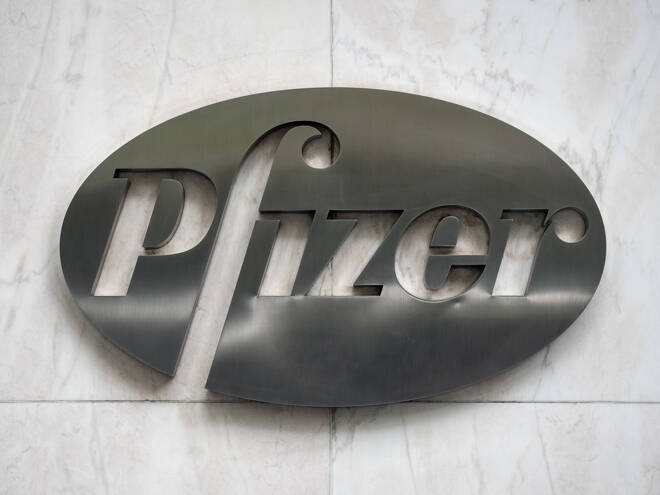Advertisement
Advertisement
COVID-19 Vaccine Update – The UK Wastes No Time as MHRA Approves Vaccine
By:
The UK becomes the first nation to approve a COVID-19 vaccine and with an efficacy rate of 95%, an end to the pandemic may be in sight.
In this article:
The Latest
BioNTech and Pfizer Inc. became the first pharma to have their mRNA COVID-19 vaccine approved on Wednesday.
The UK’s Medical & Healthcare Products Regulatory Agency (“MHRA”) became the first agency to approve a COVID-19 vaccine.
With the UK suffering at the hands of the COVID-19 pandemic, the independent regulator wasted little time.
The UK Government has pre-ordered 145 million doses of COVID-19 vaccines from Pfizer Inc., Moderna Inc., and AstraZeneca. Of the 145 million doses, the government has pre-ordered 40 million from BioNTech/Pfizer Inc.
With an efficacy rate of 95% and effective across all age groups, the first doses of the vaccine are due to arrive in days.
The UK Government announced that a first batch of 800,000 doses forms part of an expected 10 million doses by the end of the year.
With the vaccine coming in 2 doses, 5 million patients will receive inoculation if BioNTech/Pfizer Inc. delivers the full quota.
The Government’s Joint Committee on Vaccination and Immunisation (“JCVI”) affirmed on Wednesday that the first priorities should be the prevention of COVID-19 mortality and the protection of health and social care staff and systems.
The JVIC has given older adult residents in care homes the highest priority for vaccination, followed by care home workers.
Secondary priorities could include vaccination of those at increased risk of hospitalization and at an increased risk of exposure.
Logistics will now need to be in place to transport the vaccine, at -70C, for administration across the UK.
How the Markets Reacted
The FTSE100 rose by 1.23% on Wednesday, with the upside coming off the back of the MHRA announcement.
For the European majors, while it was a mixed day, the DAX30 and CAC40 came off lows in response to the news.
BioNTech SE share price rose by 6.21% in response to the news. Pfizer Inc. ended the day up by a more modest 3.51%.
While trailing Pfizer Inc. in the race to deliver a global vaccine, there was also support for AstraZeneca and Moderna Inc., which rose by 1.26% and by 1.41% respectively.
What’s next?
With UK regulators beating the FDA and the EU’s European Medicines Agency (“EMA”) to the punch, BioNTech/Pfizer Inc. will now need to deliver the doses.
There’s no trial run for BioNTech/Pfizer Inc. in terms of delivering the doses in a timely manner.
Both BioNTech/Pfizer Inc. and the government will likely face logistical challenges and the markets and governments from overseas will likely watch closely.
Successful distribution and administration of the first batch are now key. For the FDA and the EMA, both will have the benefit of the UK government’s experiences in distribution and vaccination.
The FDA is set to review the BioNTech/Pfizer Inc. vaccine on 10th December. In the New Year, the EMA review is due on 12th January.
Key areas of focus in the coming weeks will be production and distribution and geographical allocation.
The EU has pre-ordered 300 million doses of the BioNTech/Pfizer Inc. vaccine, with the U.S pre-ordering 100 million and an option for an additional 500 million doses.
BioNTech/Pfizer Inc. has projected between 5 million to 50 million doses to be available by the end of the year.
The UK is due to receive 10 million doses, which leaves 40 million assuming that 50 million doses are produced.
With the EU review of the vaccine not due until mid-January, that leaves the U.S and Japan in focus. While the U.S has pre-ordered 100 million, Japan has pre-ordered 120 million of the BioNTech/Pfizer Inc. vaccine.
Pressure may mount on the likes of the EMA to bring forward vaccine reviews. BioNTech/Pfizer Inc. may also feel increased pressure to deliver on the higher side of production forecasts…
About the Author
Bob Masonauthor
With over 20 years of experience in the finance industry, Bob has been managing regional teams across Europe and Asia and focusing on analytics across both corporate and financial institutions. Currently he is covering developments relating to the financial markets, including currencies, commodities, alternative asset classes, and global equities.
Latest news and analysis
Advertisement
